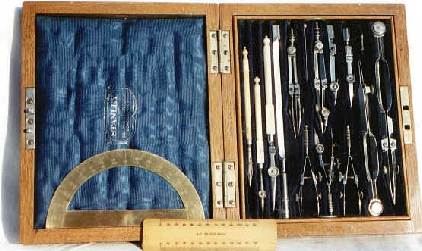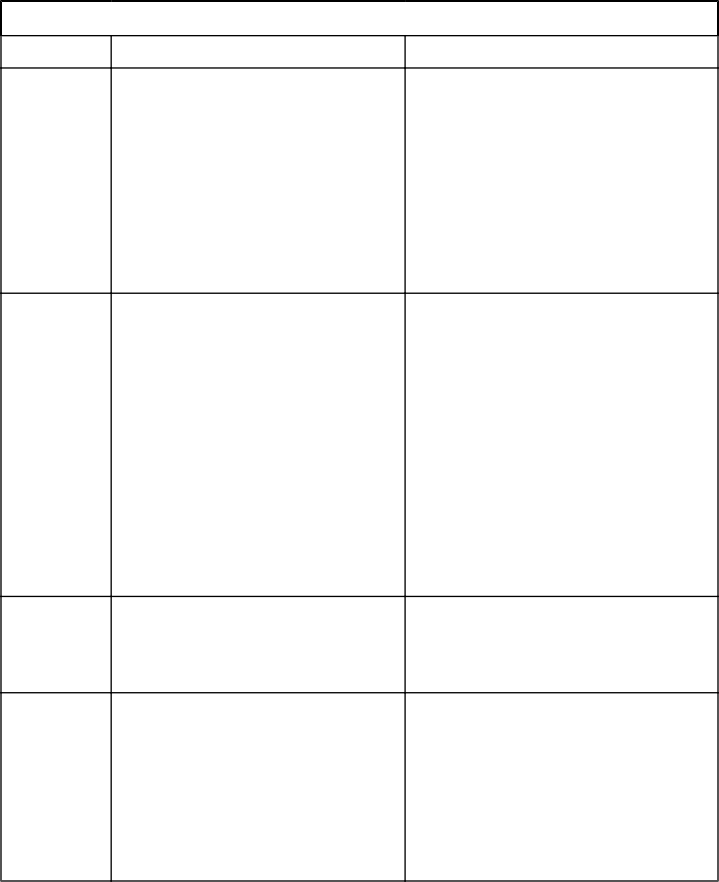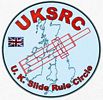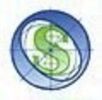


Introduction
Mathematical instruments have been in use since the beginning of civilisation. They were in use at the time of building of Babylon and were well known to the Egyptians. The earliest surviving examples date from Roman times.
During the renaissance they were developed in form as objects of both function and beauty. Instruments of this date, however, rarely appear on the market today and are generally only to be seen in the major museums in Britain and Europe. By the middle of the Georgian period they were in common place use and it is from this time forward that they can be found and purchased for a reasonable sum. The best instruments continued to be hand made to very high standards until the early years of the twentieth century and to be both functional and pleasing to the eye.
I have been collecting mathematical instruments for over twenty-five years now and continue to be fascinated by them. In spite of the fact that my profession was that of Mechanical Engineer, I continue to come across instruments that I have not seen or heard of before. Of course many mathematical instruments were aimed at professions other than mechanical engineering, such as surveying, architecture and navigation.

A fine set of traditional English drawing instruments by W F Stanley, one of the most renowned of British manufacturers, in an oak, two-tier case. The set dates from the mid-twentieth century, a late example of this style. The principal metal used is electrum (an alloy of copper, nickel and zinc). The pen handles are ivory .
I also collect a few examples of other types of scientific instrument, such as microscopes, telescopes, hydrometers and pedometers - in fact anything that takes my fancy and is reasonably priced.
Because some instruments could be grouped under other subject headings I have added a Cross Reference Table with links to relevant pages, for instance for Surveying items and for Military items.
I am always interested in learning more about the items in my collection and welcome further information. I can be contacted by email on the following link: David M Riches
I belong to the following societies and can thoroughly recommend them for the wealth of knowledge amongst their members, their events, and their excellent publications.
U K Slide Rule Circle The Oughtred Society

All photographs are by the author unless otherwise acknowledged. Copyright D M Riches, 2001 - 2023


What’s New
November 2025
November 2025
October 2025
Thornton Minerva 1953 catalogue
Watkins Bee Meter, US
Compass with RGS dial
Stanley Vernier protractor
MAHO set
Watkins Bee Meter, US
Compass with RGS dial
Stanley Vernier protractor
MAHO set
September 2025
June 2025
April 2025
March 2025
February 2025
December 2024
November 2024

Subject
Instrument Type
Page
Surveying
Box sextant
Prismatic surveying compasses
Vernier protractors
Folding Arm Protractor
Station Pointers
Surveying slide rule
Indian pattern clinometer
Military
Artillery slide rule
Artillery slide rule
Artillery slide rules
Artillery slide rule
Radiac calculators
Large Sandhurst Case (drawing instruments)
Woolwich Case (drawing instruments)
Woolwich Case (drawing instruments)
Military Protractors
Marquois Scales & Triangle
Sector (French, for artillery calculations)
Surveying instruments
Brewing
Wine, Ale & Spirit slide rules
Sikes hydrometers & saccharometer
Gauging rods
Navigation
Air navigation slide rule
Navigation slide rule
Pilot’s slide rule
Flight Computer (E6B)
Parallel rules
Station pointers
Gunter scales
| Early Sets |
| Traditional Sets |
| Later Sets |
| Major Makers |
| Instruments |
| Miscellanea |
| W F Stanley |
| A G Thornton |
| W H Harling |
| Elliott Bros |
| J Halden |
| Riefler |
| E O Richter |
| Kern, Aarau |
| Keuffel & Esser |
| Compasses |
| Pocket compasses |
| Beam compasses |
| Dividers |
| Proportional dividers |
| Pens |
| Pencils |
| Rules |
| Protractors |
| Squares |
| Parallels |
| Pantographs |
| Sectors |
| Planimeters |
| Map Measurers |
| Miscellaneous |
| Materials Used |
| Who made them |
| Who made these |
| Addiator |
| Addimult |
| Other German |
| USA |
| Miscellaneous |
| Microscopes |
| Barometers |
| Hydrometers & Scales |
| Pedometers |
| Surveying Instruments |
| Other instruments |
| Workshop Measuring Tools |
| Catalogues & Brochures |
| Levels & Theodolites |
| Compasses & Clinometers |
| Miscellaneous surveying |
| Micrometers & Verniers |
| Engineering rules and gauges |
| Wood rules & calipers |
| Dial gauges & miscellaneous |


